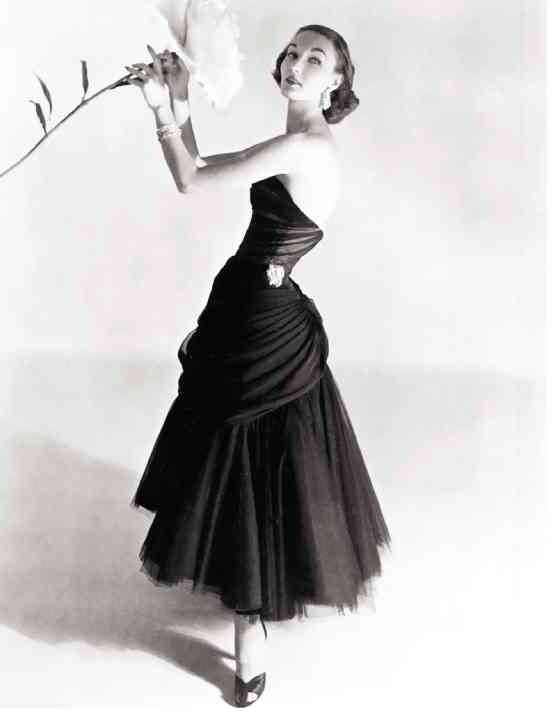
The 78 magnificent ball gowns and dresses by designer Charles James, fashion’s forgotten genius, are spotlighted in an exhibit at New York’s Metropolitan Museum of Art. “Charles James: Beyond Fashion” runs until Aug. 8.
James was an Anglo-American couturier whose body of work from the 1930s to the ’60s included sketches, patterns, hats from when he started, furniture, baby garments and underwear.
The exhibit also marked the inauguration of the Anna Wintour Costume Center at the Tisch Wing of the museum.
In his 45 years as fashion designer, James made only 200 designs but they were all true originals and groundbreaking—stand-alone feats of structure and deconstruction.
His dresses are remembered for their iconic names: The Swan, The Tree, The Clover Leaf, and The Butterfly. He invented the strapless style, the wrap dress, the use of a zipper on a formal, the swan down puffer jacket, the sports bra and the opera coat.
His palette of colors was like Van Gogh’s, expressionist and painterly. His use of nontraditional materials such as cellophane, pellon and felt were innovations.
Sexy yet covered
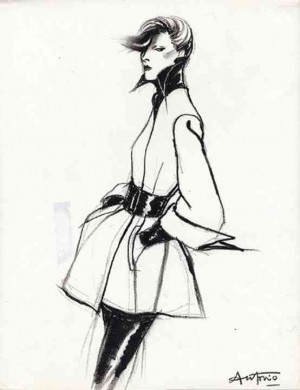
His talent was rare, unshaped by formal training, and utterly libidinous. “What is the true function of fashion except a rehearsal for propagation,” James declared.
Although Victorian in reference, with bustles and full-skirt gowns, the dresses were very sexy. He worshipped his rich clients and made them look regal yet seductive. In the ’50s, James dressed high society beauties Babe Paley, Millicent Rogers, Mona von Bismarck, Marella Agnelli and Austine Hearst.
His couture peers in Paris like Christian Dior called him “the greatest talent of my generation” and said to have influenced his New Look after World War II. Cristobal Balenciaga praised him, saying James was “not only America’s greatest couturier but the world’s best. The only one in the world who has raised dressmaking from an applied art to a pure art form.”
Fellow designers Elsa Schiaparelli (who paid his exorbitant prices) and Coco Chanel (who did not pay) wore his clothes, even helped him many times financially as he was not an astute businessman. One story goes that he spent $20,000 on perfecting a sleeve for 12 years.
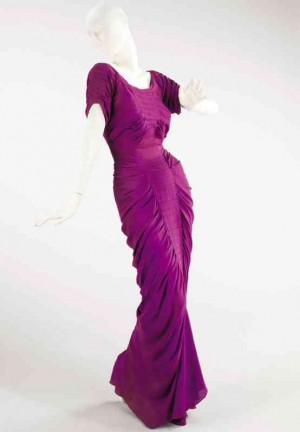
The year 1948 was the start of the golden age of American fashion and James was the king. He created the most original, tasteful ball gowns for the seasonal soirees of the NY moneyed set. But he considered himself an artist, not a dressmaker.
Mischievous eccentric
His mischievous, sometimes malicious, behavior was deep dish gossip. The blog “All About Fashion” noted that “James was an egomaniac, he was so strongly attached to his creations that he felt they ultimately belonged to him. He would borrow a dress from one client, only to lend it to another or worse, loan it out for an advertising campaign for Kotex sanitary napkins.
“At minimum eccentricity, the darkly handsome designer—who was said to have been an excellent model for his own work—might don a finished gown and dance all night at a Harlem night club before handing it over, if he handed it over at all.
“He did not let go of his creations easily. He made his clients pay, sometimes twice for the same gown, and sometimes for a garment he had also promised another client. He was notorious for not having garments delivered on time.”
James was also hooked on amphetamines that exacerbated this type of weird, unprofessional behavior.
Yet in 1950 he won the prestigious Coty Award, the first of two, and in 1953 he bagged the Neiman-Marcus Award, fashion’s Oscar.
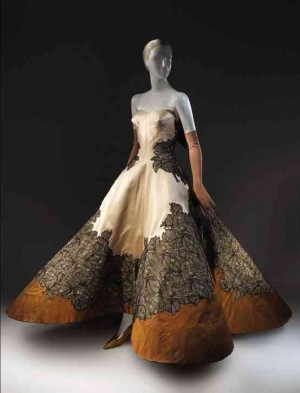
In 1954, James married Nancy Gregory, a wealthy divorcee from Texas 20 years his junior. “My wife knew I was homosexual,” he would say later. In the first year they were married, they lived at the Sherry Netherland Hotel, opening a new atelier called Charles James Manufacturers which recorded revenues of $112,963 against expenditures of $310,285.
But that was always the name of his game, outlandish cost and excess in his obsessive desire to perfect his work. By 1958, his business closed and in 1964 he was living in the Chelsea Hotel, penniless yet still creating patterns.
War with Vreeland
And why are we only reading about this designer now? Why hasn’t Vogue written about the mad genius of James? Except for a few famous Cecil Beaton photos—they were childhood friends—there are few surviving images of James’ oeuvres. His work was not published or documented for four decades by Diana Vreeland, the most powerful and influential fashion editor for half a century.
Vreeland kept James’ output from appearing on the pages of Harper’s Bazaar and US Vogue when she was fashion editor (1936-1962) and editor in chief (1963 to 1971), respectively.
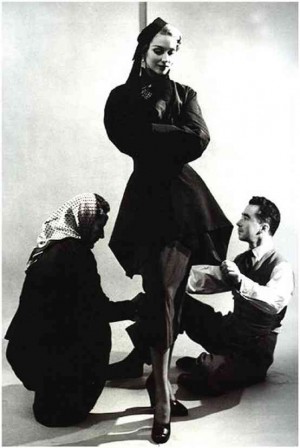
James waged a one-man war for 45 years against Vreeland and her Seventh Avenue designers who “plagiarized with ready-to-wear manufacturers, his creations.” His public enemy No. 1 was Vreeland, who he said was “a liar and promoter of copies in her magazines.”
James was vocal and scandalized when his dress with a very new cut was put on the cover of Bazaar by Vreeland and never credited to him. He insisted Vreeland never uttered an honest word about fashion.
James insisted that Vreeland “would take a Paris original to an American manufacturer and be copied. She would then sell him a page of advertising and call it fashion.” This battle destroyed him. He could not fight the onslaught of the coming of age of ready-to-wear clothing in the ’60s.
Designer Halston and illustrator Antonio Lopez tried to revive his career in the ’70s but James’ mercurial temper caused quarrels. He even called Halston “a thief of my designs,” though he allowed Lopez to sketch many of his original designs in a book he wanted to publish to be called “Beyond Fashion.”
When he died at age 72 in 1978, Women’s Wear Daily barely mentioned it.
Beautiful evening wear
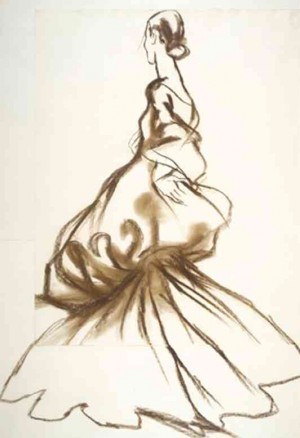
It was a glaring snub to a man who loved women, like Yves Saint Laurent and Valentino did after him. James elevated and celebrated the female form into the most beautiful evening wear the world would never see again—until now.
Today we see sculpted, even emotionally engineered fashion, James’ design process, focusing on his use of sculptural, scientific and mathematical approaches to construct revolutionary ball gowns and innovative tailoring which continue to influence designers today.
The outrageous irony is that when Vreeland became head of the Costume Institute of the Metropolitan Museum in 1973, she continued to exclude James’ iconic creations from any of the 12 glorious exhibitions she mounted.
Vreeland died in 1989, and in 1995 US Vogue’s editor in chief Anna Wintour continued the annual Costume Exhibits which included the designs of Paul Poiret and Alexander McQueen.
But finally, earlier this month, James’ unbelievable designs entered and now stand proud on two floors of the Met. So it seems that even beyond death, there was a score card kept between James and Vreeland. There is no winner or loser here, only the survival of their talent and legacy.
History is the great leveler and fashion is a vicious cycle that comes full circle, then causes closure. Today we luxuriate in Charles James’ spectacular creations, displayed at the Met like hidden treasures from Ali Baba’s cave of wonders for a whole new generation to behold.

